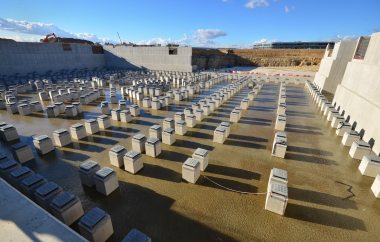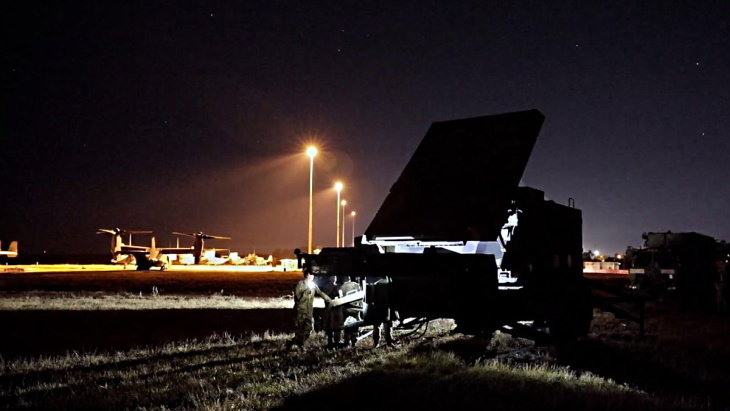The French state has authorised full construction of the world's largest tokamak nuclear fusion reactor with a formal decree to allow creation of a 'basic nuclear installation'.
 |
| ITER today: the seismic pads that will support the Tokamak Complex(Image: ITER Organisation) |
Decree number 2012-1248, signed by French prime minister Jean-Marc Aryault on 9 November, confirms the safety of the installation and is the culmination of two and a half years of work by the ITER Organisation and French authorities.
ITER is the first nuclear installation in France to be submitted to the stringent requirements of France's 2006 Nuclear Transparency and Safety Act, which gives French citizens wider access to nuclear safety information. It also represents a global licensing first, being the first fusion device in history to have its safety characteristics scrutinised by a national nuclear regulator as part of the licensing process.
Director general of the ITER Organisation Osamu Motojima welcomed the confirmation of ITER's safety by independent experts but said that the organisation had never doubted the validity of the project. "This is indeed a great day for ITER," he said.
In-depth descriptions of the design and operational conditions for the facility running to some 6000 pages were submitted to the French authorities in March 2010, and have undergone scrutiny by the French nuclear regulator (Autorité de sûreté nucléaire, ASN) as well as environmental authorities and independent experts. A public enquiry was held in the summer of 2011 as part of the process.
ITER is an international collaboration to demonstrate the scientific and technological feasibility of fusion power, and will be the world's largest experimental fusion facility. Site preparation works began for the facility at Cadarache in southern France in 2007, and the ITER headquarters building was completed at the site in September. Work began on the foundations for the ITER tokamak complex in August 2011, and installation of the seismic isolation system, which will protect the facility from ground motion in the event of an earthquake, was completed in August 2012. The facility is currently expected to reach full operation in 2027.
Researched and written
by World Nuclear News




_69218.jpg)

_50545.jpg)
_28367.jpg)
_76087_55556.jpg)




